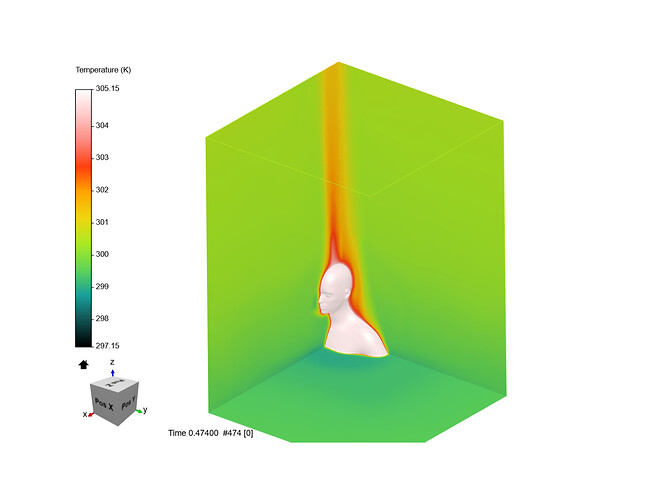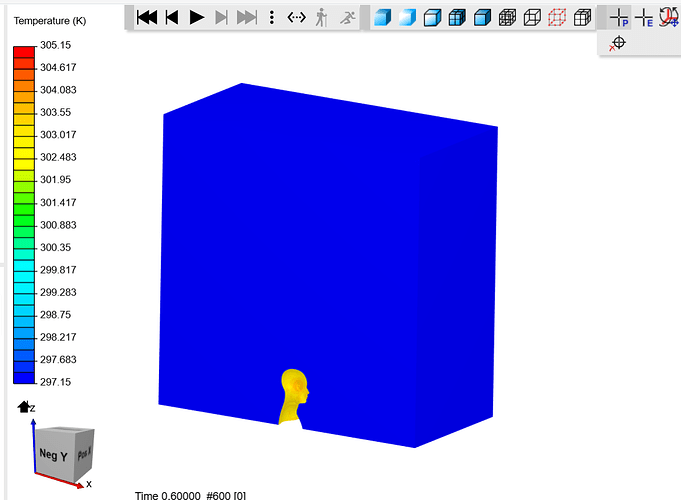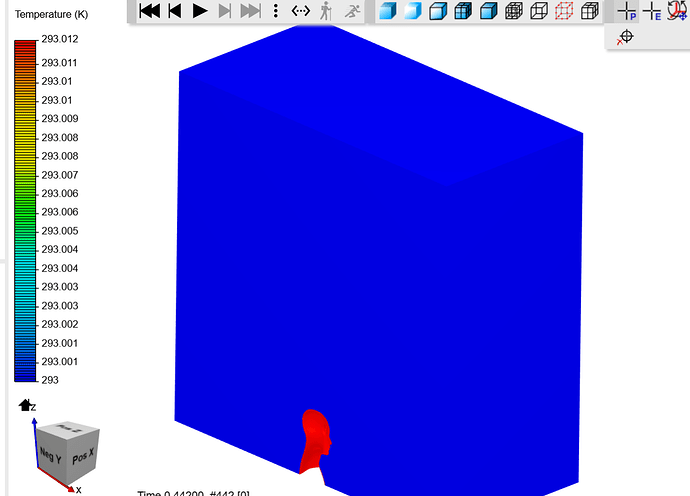Hi all,
I am trying to simulate a respiration process of a human being in a room. To achieve this I would have to first simulate natural convection from body without breathing. This simulation would ideally generate a thermal boundary layer and a heat plume over the body. The setup are given as the following
a. Body Temp: 32C
b. No-slip wall with insulation, 0 heat flux/gradient.
c. Symmetric through half-plane
d. k-e turbulence model
e. Initial temp 24C
With the steady state-solver it converged with the following results. What puzzles me is when I turned on the transient solver, it diverges when solving for the 1st time-step. First, I thought my CFL condition wasn’t met so I reduced my time-step to 1e-5 which correspond to CFL ~ 1 from the smallest grid size (first inflation layer). It is also strange that steady-state converges for the same problem while transient diverges which usually happens the other way round. I think I have to have obtain a successful transient simulation before moving onto implementing a sinusoidal input for velocity input (respiration) which of course varies with time.
Since transient solver did not work, I tried setting velocity inlet sinusoidal function at the nose and solved it using steady-state. What happened was that the solver did not allow me to proceed because I need to specify a pressure outlet for a fixed velocity inlet/outlet. So I swapped the boundary condition at the ceiling to a pressure outlet (was an insulating wall previously). Which brings to my second question regarding the role of pressure outlet. After solving in steady-state, the heat plume was missing and the entire flow field was kept constant at 24C. It seems like a steady-state diffusion process for me and I have no idea why that happens as the pressure outlet was set at 0 gauge so there should not be any “suction” at the ceiling.
Its been a lengthy post, thank you for reading and hope to receive feedback!
Here’s the project link: Human Boundary Layer by ChiHin | SimScale
Cheers!


